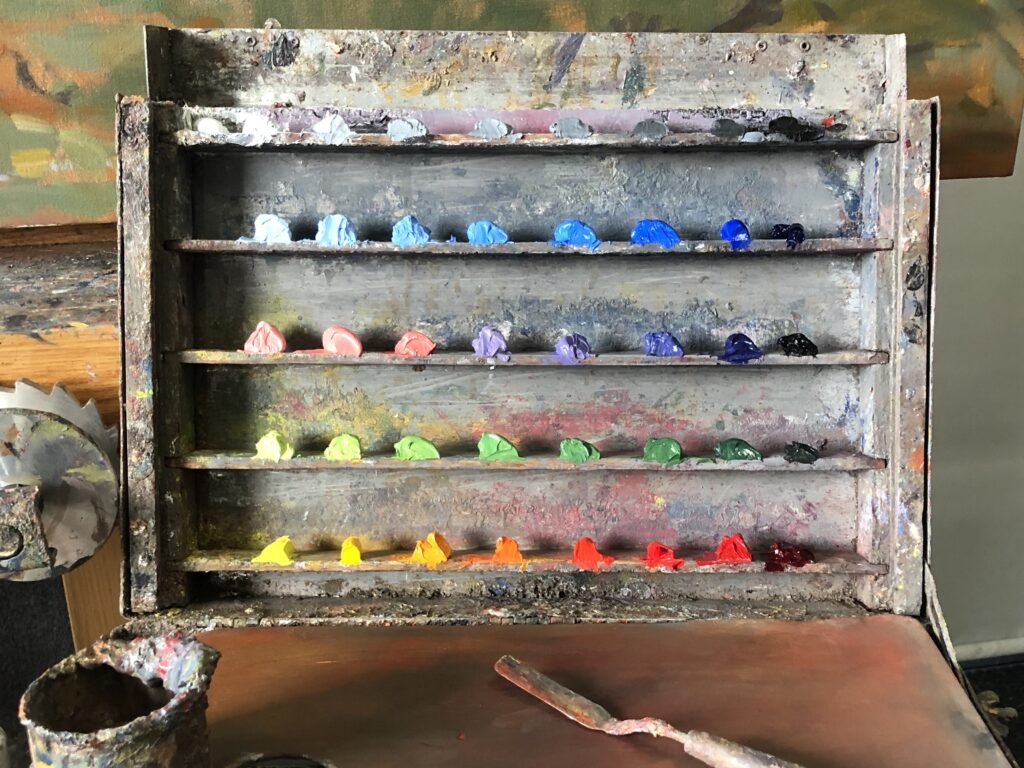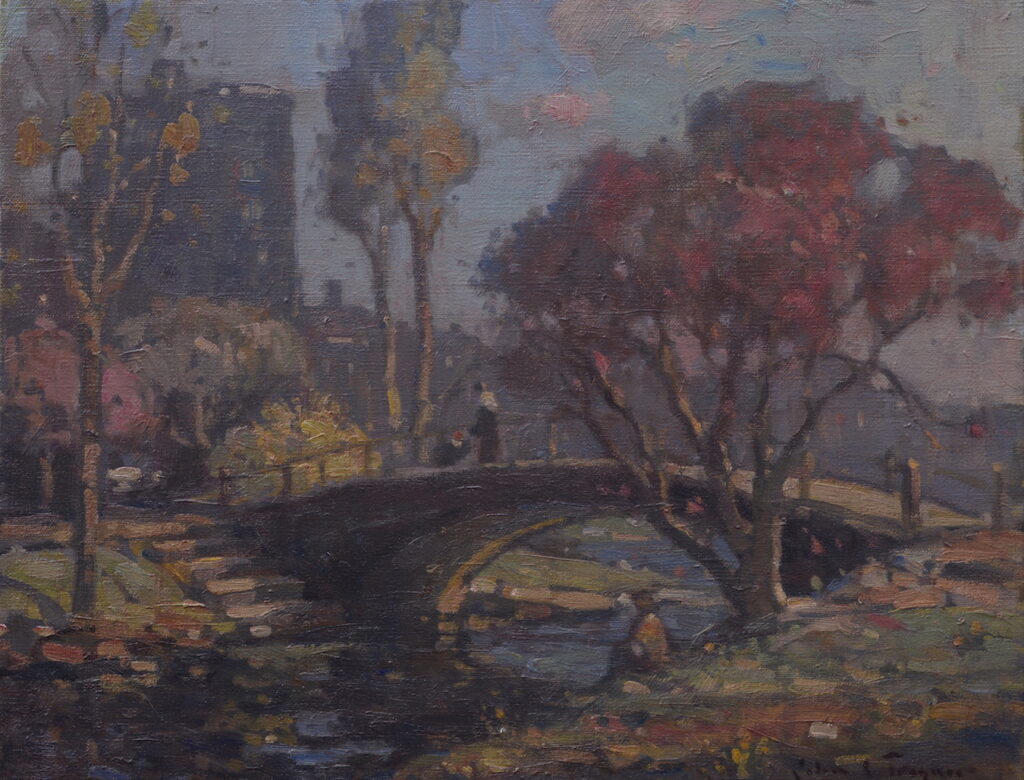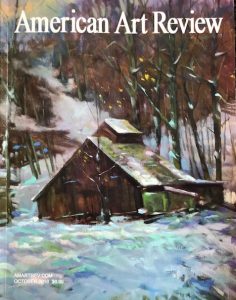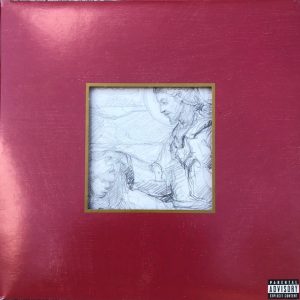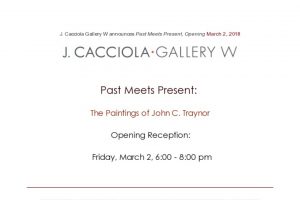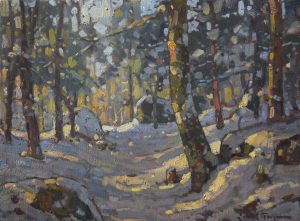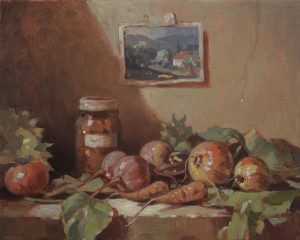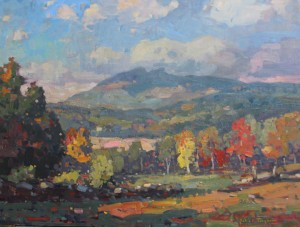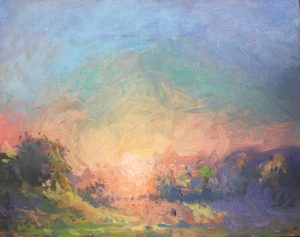Arts Alive! and the Keene Sentinel present awards at the third annual Ruth and James Ewing Arts Awards, Wednesday, July 19 at the Redfern Arts Center, Keene State College
2017 Ewing Arts Awards magazine featured the painting “High Dunes-10th Hole at Chambers Bay” for the cover art.
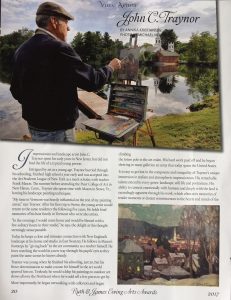
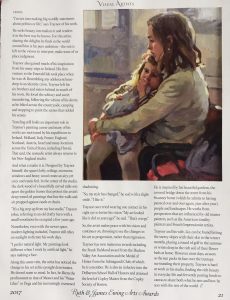
Impressionist and landscape artist John C. Traynor spent his early years in New Jersey, but did not lead the life of a typical young person.
Intrigued by art at a young age, Traynor hurried through his schooling, finished high school a year early and was accepted into the Art Students League of New York as a merit scholar, with teacher Frank Mason. The summer before attending the Paier College of Art in New Haven, Conn., Traynor also spent time with Mason in Stowe, Vt., honing his landscape painting techniques.
“My time in Vermont was heavily influential on the rest of my painting career”, says Traynor. After his first trip to Stowe, the young artist would return to the same residency the following five years. He holds fond memories of his host family in Vermont who were also artists.
“In the evenings, I would come home and would be blessed with a few solitary hours in their studio,” he says, the delight at this thought seemingly unsurpassable.
Today, he keeps a close and intimate connection with New England’s landscape at his home and studio in Swanzey. He follows in Mason’s footsteps by “giving back” to the art community as a teacher himself. He loves watching the world in a new way through his pupils’ eyes as they paint the same scenes he knows already.
Traynor was young when he finished his schooling, just 20, but his fierce determination to make a name for himself in the art world spurred him on. Tirelessly, he would schlep his paintings to outdoor art shows all over the Northeast where he would sell a few pieces to get by.
More importantly, he began networking with collectors and began climbing the totem pole in the art realm. His hard work paid off and he began showing in many galleries; an array that today spans the United States.
It is easy to get lost in the composure and tranquility of Traynor’s unique immersion in realism and atmospheric impressionism. His remarkable talents extend to every genre; landscape, still life and portraiture. His ability to connect emotionally with humans and deeply with the land is exceedingly apparent through his work, which often stirs memories of tender moments or distant reminiscences in the hearts and minds of the viewer.
“I’m not into making big worldly statements about politics or life,” says Traynor of his work. He seeks beauty, internalizes it and renders it in the best way he knows. For this artist, sharing the delights he finds in the world around him is his pure ambition – the rest is left to the viewer to interpret, make sense of or place judgment.
Traynor also gained much of his inspiration from his many trips to Ireland. His first venture to the Emerald Isle took place when he was 18. Resembling any adolescent knee-deep in an identity crisis, Traynor left his six brothers and sisters behind in search of his roots. He loved the solitary and sweet meandering, following the whims of his desire, as he biked across the countryside, camping and stopping to paint the scenes that tickled his senses.
Traveling still holds an important role in Traynor’s painting career and many of his works are motivated by his expeditions to Ireland, Holland, Italy, France, England, Scotland, Austria, Israel and many locations across the United States, including Hawaii. That said, the nomadic artist always returns to his New England studio.
And what a studio it is. Designed by Traynor himself, the space’s lofty ceilings, enormous windows and heavy wood create an airy, yet cozy and rustic feel. In the center of the studio, the dark wood of a beautifully carved table sets apart the golden frames that protect the artist’s deep-toned oil painting that line the walls and sit propped against easels or chairs.
“It’s a big step up from my last studio,” Traynor jokes, referring to an old drafty barn with a small wood stove he occupied a few years ago.
Nonetheless, even with the newer space, modern lighting included, Traynor still relies on sunlight to dictate his work days. “I prefer natural light. My paintings look different when I work by artificial light,” he says making a face.
Along this same vein, the artist has noticed the change in his art as his eyesight deteriorates. He doesn’t seem to mind. In fact, he likens the predicament to that of Monet and his “Water Lilies” or Dega and his increasingly coarsened shadowing. “So, my style has changed,” he said with a slight smile. “I like it.”
Traynor once tried wearing one contact in his right eye to better his vision “My art looked like it did 10 years ago!” he said. “That’s creepy.”
So, the artist makes peace with his vision and continues on, choosing to see the changes in his art as progression, rather than regression.
Traynor has won numerous awards including the Frank DuMond award from the Hudson Valley Art Association and the Medal of Honor from the Salmagundi Club, of which he is a member. He is also an inductee into the Delbarton School Hall of Honors and attained the level of Copley Master from the Copley Society of Boston.
He is inspired by his beautiful gardens, the covered bridge down the street from his Swanzey home (which he admits to having painted over and over again, year after year), people and landscapes. He works from perspectives that are influenced by old master painters, such as the American tonality painters and French Impressionist artists.
Traynor and his wife, Liz, can be found hitting the snowy slopes with their skis in the winter months, playing a round of golf in the summer or wrists deep in the rich soil of their flower beds at home. However, most days, as soon as the sun peeks its face over the treetops surrounding their property, Traynor is hard at work in his studio, finding the rich beauty in everyday life and fervently putting brush to canvas to share both what he sees and how he sees with the rest of the world. (by Annika Kristiansen, photo by Michael Moore)
